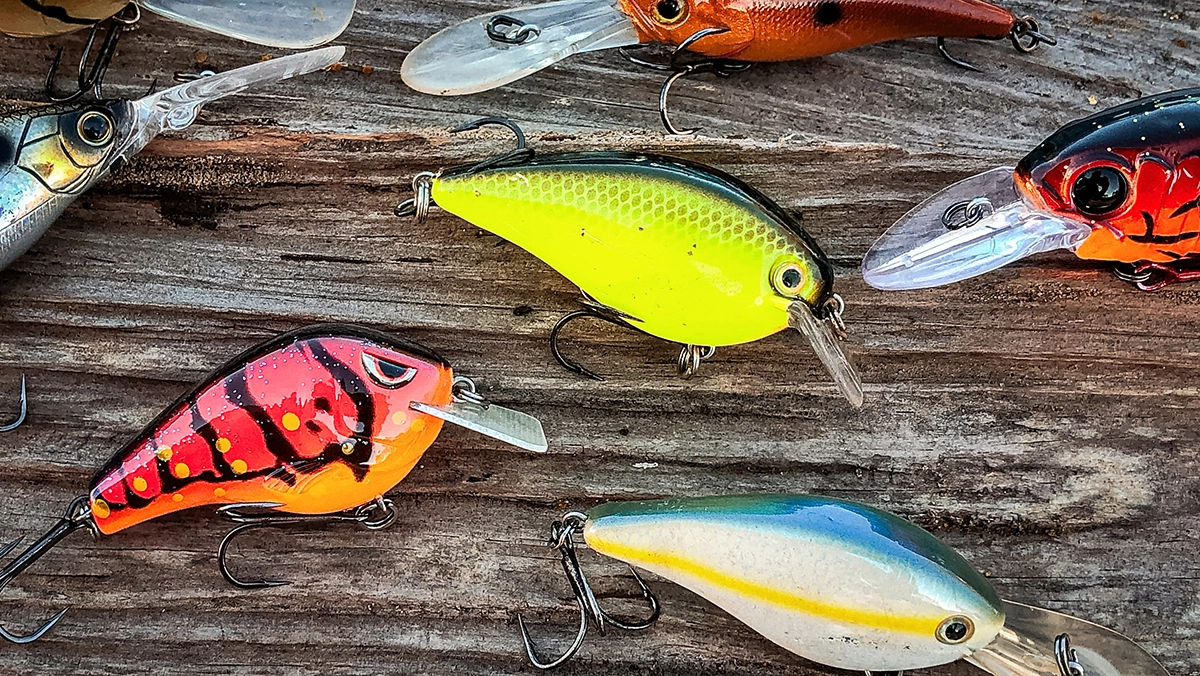Though we’re smack dab in the middle of winter, a little light is starting to break through from the other side. Every day is getting a minute or two longer. The grey clouds are lifting for a moment here and there. And the bass are starting to come alive again for most of us across the country–some even have bedding on their brains in the Deep South. For most of us though, that’s still a ways off yet.
Here in the southeast, the pre-spawn isn’t far out now. We’re about a good month from the immediate pre-spawn, when bass will flood the shallow areas where they will inevitably make their beds. But even before that, the early portion of the pre-spawn is about to be underway, in which bass group up in deep water and on mid-depth breaks and grass lines.
Let’s go through a few of the baits that can be used to target those bass across Georgia, Alabama, Tennessee, Mississippi, Louisiana, Texas, and the Carolinas, and then circle up with a few experts from around the country to get their input on what they’ll be fishing with in February. Let’s get to it.
ChatterBait / Vibrating Jig
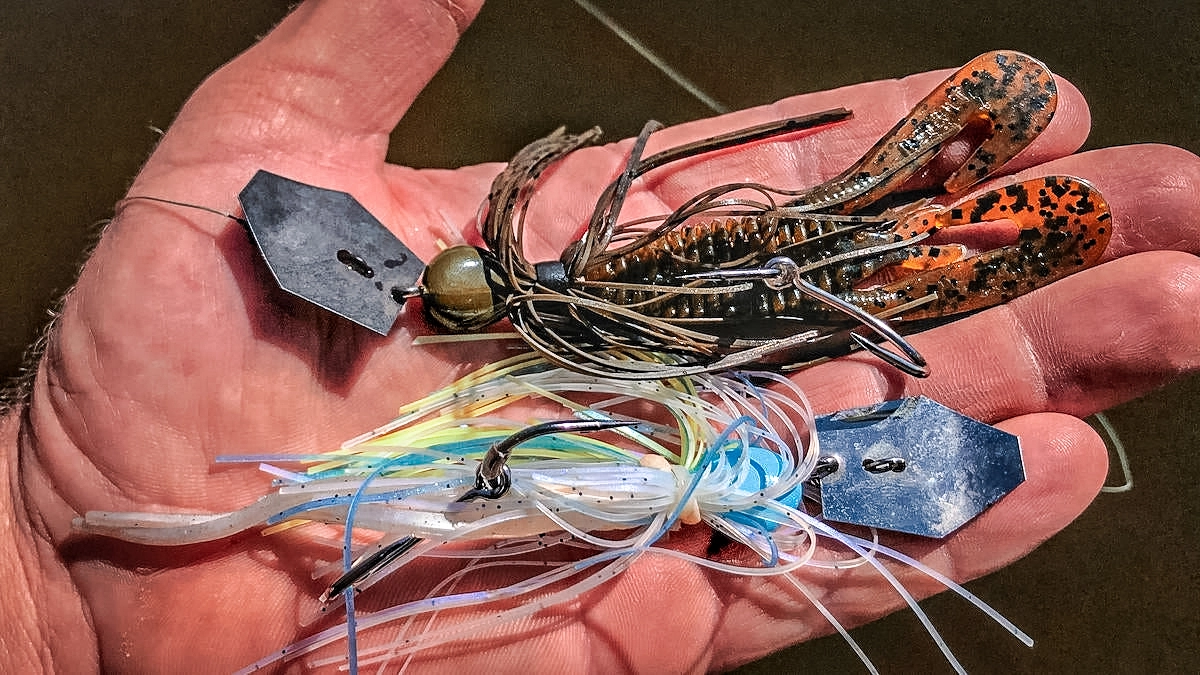
The ChatterBait bite dies back a little bit in the dead of winter. You can still get a few bites on these hard knocking baits in December and January, but the action is a little too aggressive for the liking of most lethargic bass. However, when February rolls around, you better get the vibrating jig box back out pronto.
As the bass begin to move into the pre-spawn phase, they start to stage around cover in 6 to 12 feet of water. Submerged vegetation, stumps, rocks, dock posts and brushpiles will all collect aggressive fish that are looking to feed up before the spawn, especially later in the month. And a vibrating jig is the perfect bait to trigger those bites.
In most cases, you’ll be better off fishing your bladed jig on fluorocarbon, so that that bait can sink down nearer to the cover. But if you’re fishing around particularly dense vegetation, swap to braid so that you can rip the bait free when it bogs down in the cover and pull bass out if they try to bury up.
A standard 1/2-ounce vibrating jig works great in February, and it’s best to choose your color selection based on the water color and forage in your area. If it’s muddy and there are shad present, a white or chartreuse will do better. If the water is clear and you’re around bream or bluegill, green pumpkin or black and blue should do the trick.
Translucent shad patterns work well around shad in clear water. And there’s always the option to go with red—a staple color for any style bait in February and March.
Lipless Crankbait
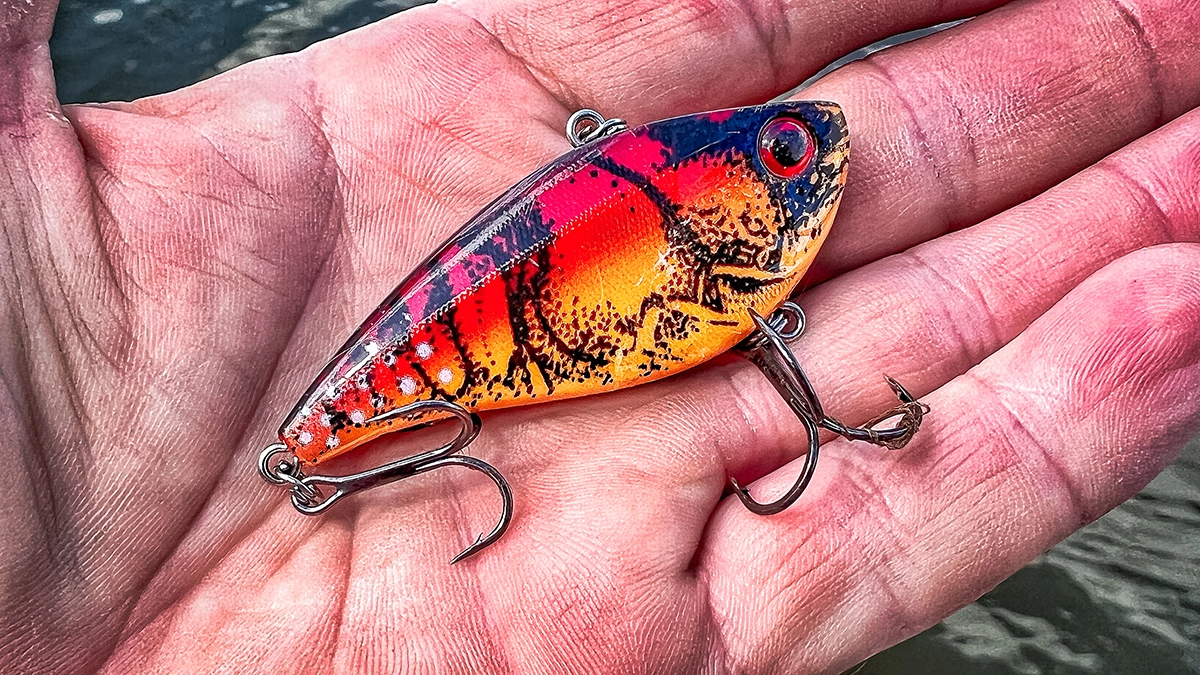
A lipless crankbait works in February for a lot of the same reasons the ChatterBait does. The bass are again feeding up in the latter half of the month, preparing to make their way to the spawning grounds in March. These fish stage in February just outside of these pockets and flats and pileup on points or cover. The lipless is the perfect bait to target these fish in a variety of ways.
For starters, you can yo-yo a lipless in deeper water. There are still a lot of fish out deep in February. As these fish move closer to the bank, they’ll start to pile up on drops and points.
You can target them really well with a 1/2-ounce lipless crankbait by casting the lure out, letting it fall to the bottom and then snatching it up as soon as it hits the bottom. Let the bait fall again, watching for your line to go slack and then pump it up off the bottom again. Repeat until your bait is back to the boat. This technique is referred to as yo-yoing.
You can do something similar around submerged vegetation, letting the bait tick the cover and then ripping it out. As the bait bursts free from the cover, the bass that are hunkered down in the grass unload on the lipless and the fight is on.
Then there’s the option to to fish the lipless super shallow over flats. For whatever reason, bass will go ultra shallow on lakes like Lake Guntersville even when the water is still in the 30s and 40s. And a lipless is one of the most capable baits to go in and get them out because it can be cast a long ways and reeled super shallow.
Football Jig
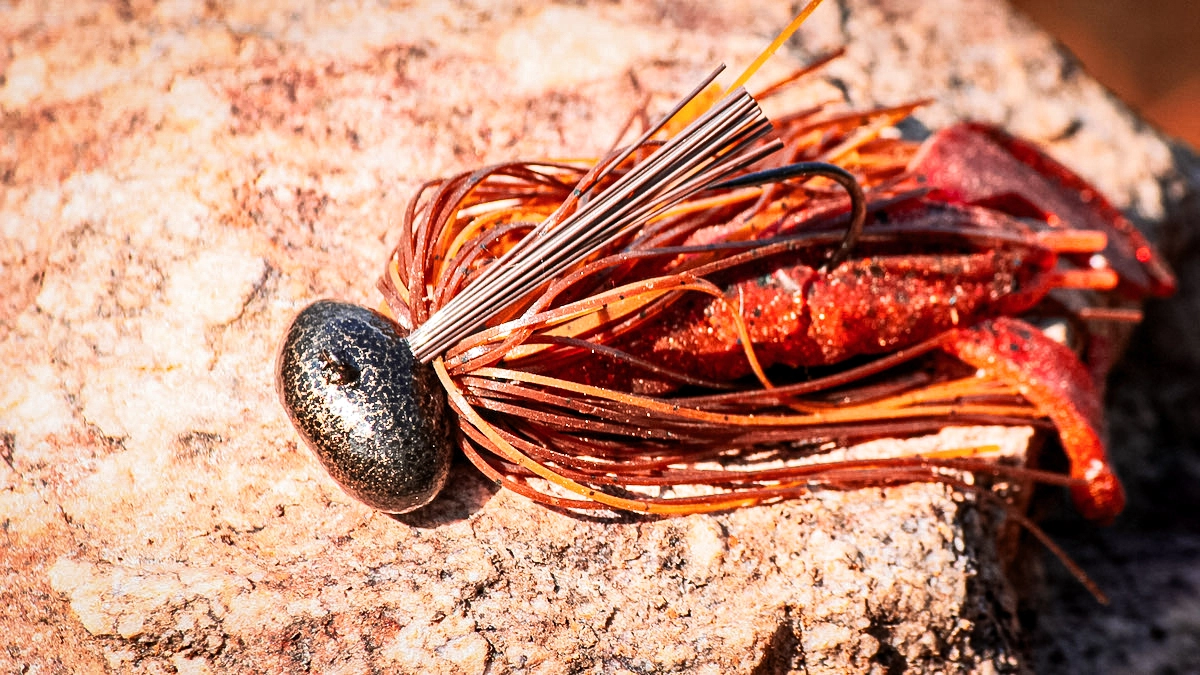
For the bass that are out deep still, a football jig is one of the best baits to use. Early in the winter, the Ned rig and finesse jigs are often necessary to unlock the lips of lethargic cold-blooded bass. But now, even though the water hasn’t warmed up all that much, the bass are more aggressive and sensing the need to feed—and a big, bulky football jig represents an easy to catch and filling meal.
If the water is super muddy, the deep bite can be pretty tough. But from clear water to a pretty good stain, a football jig out deep is a great way to catch some really big ones. A dark green pumpkin skirt with a few strands of orange works extremely well in February in most water colors.
Add a big craw-style trailer to the back and you’re onto something. If you’re fishing in current, you’ll need to use a 3/4-ounce jig once you pass the 15-foot mark. If there’s no current, you can save the 3/4-ounce for 20 feet or more. In either case, a 1/2-ounce jig works well shallower.
The bass will bite the heavier jig even shallower. But the lighter the jig you can go with, the easier it will be to keep your bait from hanging up. You’ll want to cast your jig out along bluffs, points and drop-offs, and then drag it slowly along the bottom, trying to maintain contact with the bottom the whole time. If the current is strong, you’ll find it’s easier to keep your bait from hanging up if you swim it along the bottom, letting the bait drift with the current just off the bottom, so that it doesn’t wash under cover and hang.
The best thing about fishing a football jig in February is the bite. They typically thump it good. When you feel that bite, reel down and set the hook hard. The deeper the fish are, the more line you’ll have out, and the more stretch you’ll have in that line. So, to get a good hookset you need to take up that slack, but try not to do it so fast and hard that the fish feels you.
Crankbait
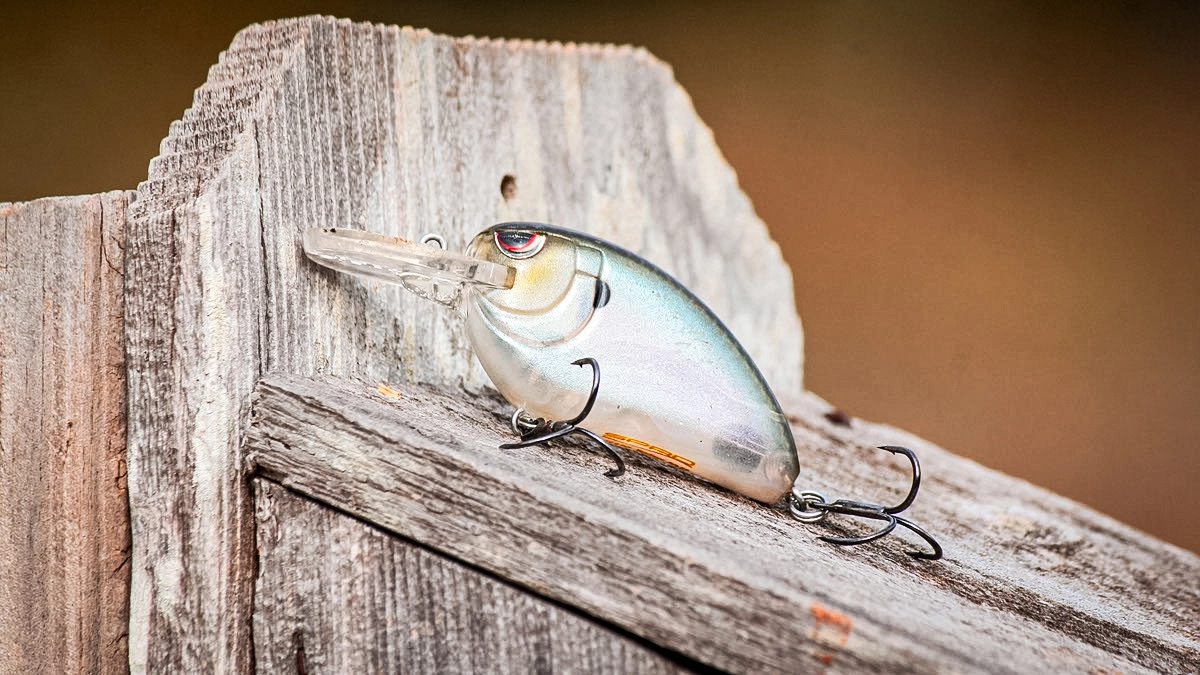
If you’ve been reading these articles each month, you’ll notice a trend—crankbaits catch bass all winter. From November to February (and through March), crankbaits catch them.
A lot of the same culprits we’ve already talked about these last few months still work really well in February. Shad Raps, Wiggle Warts, flat-sided cranks and squarebills are all effective. But the need for finesse starts to fade, similarly to what we see with the Ned rigs and finesse jigs.
Now, I want to stress here that Shad Raps and other finesse cranks are still perfectly capable of catching bass, and big ones—just the same way that Ned rigs and finesse jigs are.
It’s just not as necessary to use these baits since the bass are becoming more aggressive. So, if you want to go with something like a SPRO Little John MD for instance that’s easier to throw, the bass will be all about it.
You’ll even start to see some good fish push shallow enough for you to catch them on a squarebill in February. Causeways, dams and bridges are all great places to take advantage of this bite with a squarebill, as the bass can move up quickly from deep water to shallow and hang near rip rap and rock.
Position your boat just off of the rock and cast your crankbait straight down the causeway so that you can parallel the cover and keep your bait in the strike zone as long as possible.
Because of the abrasive cover, you’ll want to use fluorocarbon line that’s at least 15-pound test, though 17 and even 20-pound test may be warranted on lakes with big fish and particularly gnarly cover.
Field Reports
John Crews – Virginia
This time of year I have a couple sneaky baits that work good. One is the MISSILE Jigs Micro Jig. I really like the quarter-ounce football head with a Micro D Bomb on the back. Just a standard green pumpkin with some type of orange in the trailer, like Super Craw. I usually throw that on a spinning setup — a 7’1” Cashion Micro Jig Rod is perfect with Sunline 8-pound Sniper leader and 12-pound Sunline X Plasma as the main line.
Of course, that is on one of the new Seviin GX Spinning Reels.
The other bait that I like is the SPRO Micro Little John DD. I throw that on 8 or 10-pound Sunline Crank FC. I use the Cashion Square Bill Rod for that with a Seviin GS Baitcast reel in 7:1 gear ratio. I try to key on rock mostly in February and look for it along secondary points or staging areas. — John Crews
Brent Ehrler – Southern California
All about the jerkbait and crankbait for me. I like the Lucky Craft Lightning Pointer DD for jerking in any shad pattern. I’ll crank the Lucky Craft 1.5, 1.5 DD, 2.5 DD and 3.5 XD–all in shad as well.
If under 6 feet I’ll throw the 1.5. From 6 to 10 I go with the 1.5 DD. From 10 to 14 it’s the 2.5 DD. And 15 to 20 I use the 3.5 XD. I’m not joking, I’ll have all those on the deck and use them according to depth.
If I slow down, it’s a Buckeye Jig with Yamamoto Flappin’ Hog for a trailer and a wacky Thin Senko drop shot. Rock and structure anywhere on the main body of the lake and points are the key. The fish usually are more main lake this time of year since that’s where the bait lives. — Brent Ehler
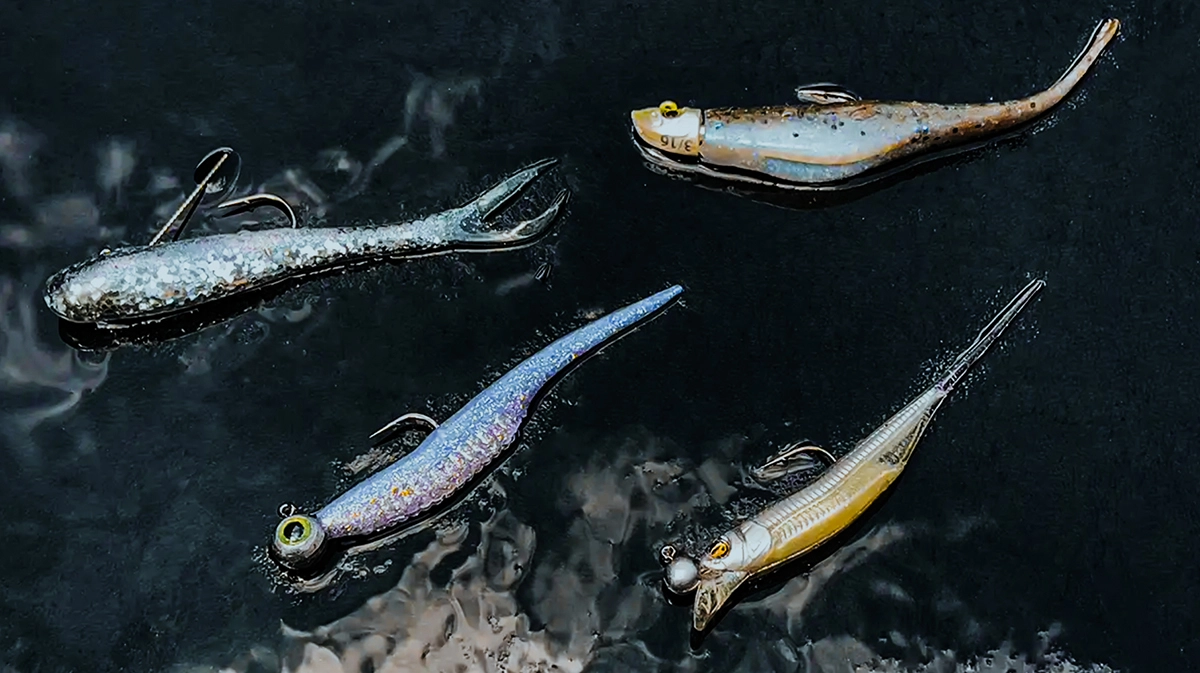
Tyler Anderson – North Texas
February is actually the coldest month of the year for us in North Texas. It’s not January, though this year it might be because we had two snow storms–but it’s usually February.
It’s really minnow shaking and flat-sided crankbaits around rocks, or you just get to the rock formation and go out from it. The fish are just chasing bait around, standard highland reservoir type stuff.
The grass stuff in North Texas doesn’t get good until the end of the month. It doesn’t even grow until March. Our Hybrid Hunter/Trap bite is not good (most of the month). But at the end of February I’ll start throwing them.
I fish a lot of standard pre-spawn stuff in ponds because they warm up faster. Shallow bodies of water are going to be similar. If it’s a sunny day, I’m probably not going to go to a super clear North Texas lake until March or April. I’m going to stick to dirtier lakes because they’re going to warm up faster. Just scoping as usual and shallow later on in the month. — Tyler Anderson


